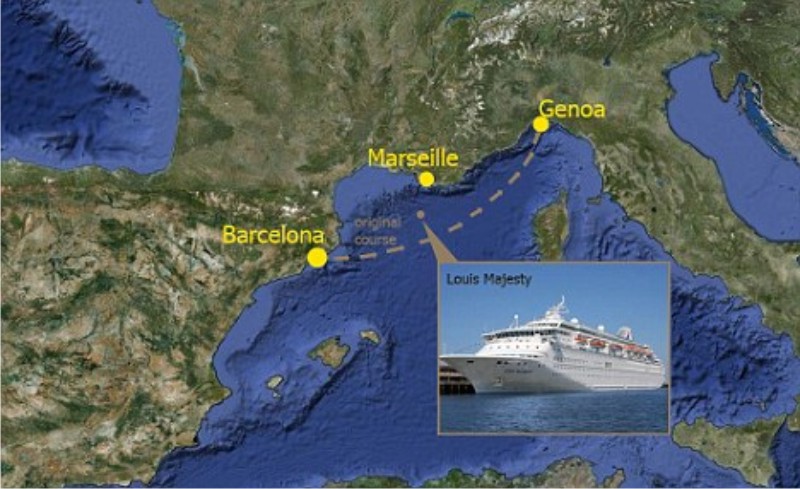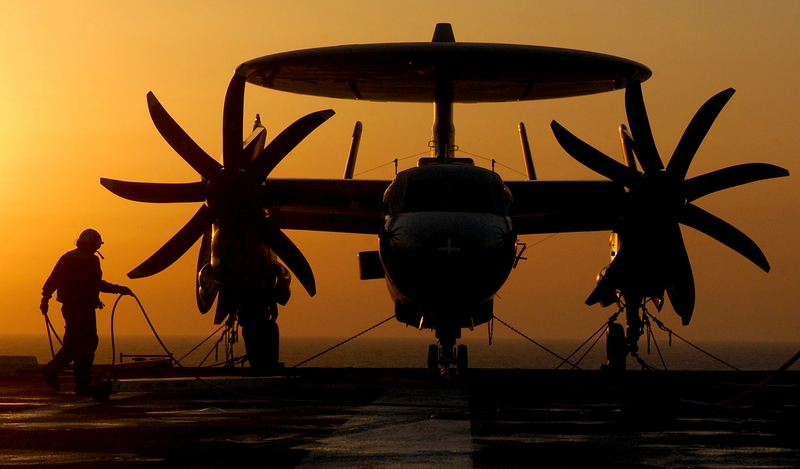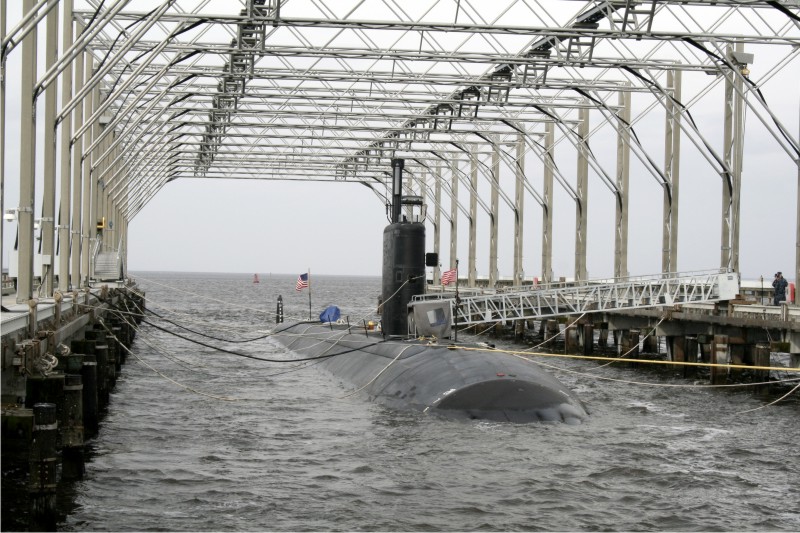
Welcome to MSW’s Scuttlebutt! Here’s the news for the day.

Armed Spanish trawler repels pirate attack
Source: EU Business
(BRUSSELS) - Armed, private security guards aboard a Spanish trawler repelled an attack by pirates using rocket-propelled grenades in the Indian Ocean on Thursday, naval forces and Spanish sources said.
The European Union's naval mission to the waters off Somalia and the Gulf of Aden, said that "earlier this morning, 4 March, the 2,100-tonne Spanish fishing vessel Albacan was attacked by pirates in the Indian Ocean.
"The Albacan, owned by Albacora, and registered in Cadiz, was fishing half way between the Seychelles and the Kenyan coast (off Mombasa) when it was approached by two pirate skiffs."
A statement by EU-NAVFOR said one of the skiffs "fired a rocket-propelled grenade that exploded on the deck of the fishing vessel," but that "private security armed guards" fired back "over the heads of the pirate skiff" and the attackers fled.
"All crewmembers are unharmed," the naval mission added.
The Spanish fisheries federation said the attack took place at 0730 GMT some 350 nautical miles (650 kilometres) off Kenya, with Spanish media citing an exchange of gunfire and a fire, rapidly extinguished, in the kitchen caused by the grenade.
Last year, 16 Spanish crew members of a tuna trawler, the Alakrana, were held for more than a month by Somali pirates before a four-million-dollar (2.9-million-euro) ransom was paid.
The Spanish government has authorized the use of armed guards, as opposed to assigning military personnel the way France has, for instance.
Passenger on cruise ship: Wave ordeal terrifying
Source: Associated Press
BARCELONA, Spain – Monstrous waves that smashed into a Mediterranean cruise ship flooded people's cabins, broke windows in a restaurant and sent terrified travelers screaming for doctors, passengers said Thursday.
Claude Cremex, 73, of Marseille, France said he was in his cabin resting because of rough seas when the walls of water hit the Cypriot-owned Louis Majesty, which was carrying 1,350 passengers and 580 crew members off the coast of northeastern Spain.

"A lot of water came in. Many cabins were flooded," said Cremex, who was traveling with his wife. "Many people were very frightened," he told The Associated Press.
Cremex said he did not see the waves himself but later viewed the damage. "It was spectacular," he said as the ship sat docked at Barcelona's port with passengers sunning themselves on deck the day after the accident.
Amateur video footage taken by a passenger and aired on Spanish television showed the instant when a huge, foamy wave hit what appeared to be a restaurant or lounge area, blowing out the window, triggering screams and sending shin-high water gushing along the floor. A woman is heard crying in the background.
The ship's owner and operator, Louis Cruise Lines, said the vessel was struck Wednesday by three "abnormally high" waves more than 33 feet (10 meters) high that broke glass windshields in the forward section. Two people died and 14 were slightly hurt, the company said.
Large waves are not rare in the Mediterranean, but ones that size occur only once or twice a year, said Marta de Alfonso, an oceanographer with the Spanish government.
"Suddenly we saw a wave that went up above our level, and I said to my husband, 'tonight we will not have to wash the windows,'" said Claudine Armand of France, who was in her cabin at that point. "Right then we heard we heard a loud noise, and it was the wave that hit us."
"When we came out of the room we saw the wave had flooded everything," she told Associated Press Television News.
Pierre Languillon, also of France, said damage was extensive and he saw many people with superficial injuries.
"They called for doctors, as many doctors as there were. Luckily nothing happened to us, but I think we averted a catastrophe."
Louis Cruise Lines spokesman Michael Maratheftis said 14 passengers who suffered only minor injuries were taken to hospital as a precaution.
Arrangements have been made to fly all 1,350 passengers back home Thursday and the ship will carry on with its normal cruise schedule later this month after repairs are completed, he told the AP from Cyprus.
Maratheftis said the two dead passengers — a German and an Italian — suffered fatal injuries from the glass shards and ripped-out window frames and furniture.
"It was three waves, one after the other. The damage was done by the second and the third waves. We are talking about waves that exceeded 10 meters in height. This was unforeseen and unpredicted because the weather was not really that bad," Maratheftis said.
De Alfonso said there was in fact a big storm in the area at the time and the waves might have been stirred up by fierce winds. Waves often come in threes, she said.
Another passenger, Jean Claude Fery, of Marseille, said he was in his cabin looking out the porthole at tremendously turbulent seas. "I have never seen waves so big. It was unbelievable."
A Louis Cruise Lines statement said the waves smashed windows in a public area on deck 5 on the forward part of the vessel.
The ship was on a 12-day cruise from the ports of Genoa and Marseilles in the western Mediterranean, calling at Tangiers, Casablanca, Tenerife, Lanzarote, Cadiz, Cartagena, Barcelona and had been due to return to Genoa on Thursday.
Maratheftis said many passengers have already left the ship to return home.
Louis Cruise Lines' Web site says the ship is 680 feet (207 meters) long, and features 10 passenger decks and 732 staterooms along with various bars, pools, restaurants and shops.
General Dynamics NASSCO Launches USNS Charles Drew
Source: General Dynamics NASSCO
SAN DIEGO --- General Dynamics NASSCO, a wholly owned subsidiary of General Dynamics, today launched the U.S. Navy's newest supply ship, USNS Charles Drew (T-AKE 10), during a christening ceremony at the shipyard. The ship is named in honor of Dr. Charles R. Drew, the African American surgeon and hematologist who pioneered the procedures for the safe storage and transfusion of blood.

Vice Adm. Regina Benjamin, the Surgeon General of the United States, was the ceremony's principal speaker. Mrs. Bebe Drew Price, the eldest daughter of Dr. Drew and the ship's sponsor, christened the ship by breaking the traditional bottle of champagne against the bow before the 689-foot-long ship slid into San Diego Bay. More than 1,300 people attended the ceremony.
In 1938, while on a fellowship at Columbia University's medical school in New York, Dr. Drew (1904-1950) worked on a blood chemistry and transfusion research team that sought methods to preserve blood over long periods of time. Red cells, one of the four elements of blood, begin to break down after 24 hours and cause stored blood to be unsafe for use after one week. Dr. Drew achieved success using the plasma element of blood which, since it does not contain red cells, could be safely stored for months and given to anyone regardless of their blood type. In 1941, Dr. Drew set up the first blood bank for the American Red Cross in New York City. The program became a model for blood banks nationwide, which became increasingly necessary after the United States entered World War II several months later.
USNS Charles Drew is the tenth ship of the Lewis and Clark (T-AKE) class of dry cargo-ammunition ships for the Navy, and the first U.S. Navy ship to be named after Dr. Drew. NASSCO began constructing the ship in October 2008 and is scheduled to deliver it to the Navy's Military Sealift Command in the third quarter of 2010. When the Charles Drew joins the fleet, its primary mission will be to deliver nearly 10,000 tons of food, ammunition, fuel and other provisions to combat ships on the move at sea.

CVW 5 Continues Capability Upgrades with Arrival of New Hawkeye 2000
Source: US Navy
ATSUGI, Japan --- Three new E-2C Hawkeye 2000 aircraft arrived at Naval Air Facility Atsugi, Japan to join Carrier Airborne Early Warning Squadron (VAW) 115 Feb. 28.
The improved E-2C Hawkeye 2000 carries advanced capabilities over its predecessor in the areas of detection, processing, identification, communication and navigation.

Their arrival, along with 24 newer F/A-18E Super Hornets in the past two months, is part of several recent upgrades to Carrier Air Wing (CVW) 5 making it the most powerful and capable airwing in the Western Pacific region and the U.S. Navy.
According to Capt. Ross Myers, commanding officer of CVW 5, this upgrade goes beyond increasing just the battle group's efficiency.
"The capability that the Hawkeye 2000 brings to Carrier Air Wing 5 is more than just the squadron," said Myers. "It brings to the entire air wing capabilities that we have never had before and in a greater scope it brings to the joint security cooperation between the United States and the Government of Japan in defense of Japan and Japanese self defense forces a greater capability and lethality for the strike fighters."
Key among the advances is the cooperative engagement capability upgrade which enables the Hawkeye to serve as the fleet's information hub, fusing and distributing information from sources such as satellite and ship-borne radar. This enhanced technology provides better data links to ships conducting ballistic missile defense operations at sea, expanding the reach of U.S. Navy maritime operations in the 7th Fleet area of responsibility.
VAW 115's maintenance officer and naval flight officer Lt. Cmdr. Bill Selk has worked with the E-2C Hawkeye for over a decade and feels this new upgrade will play a vital role in CVW 5's mission.
"From the outside both airplanes look almost identical, but from the inside it brings a whole new level of capability for us," said Selk. "It has a few new displays and a few new systems that will really enhance our situational awareness and will help us convey that to the battle space."
The Hawkeye 2000's arrival was no surprise to the squadron. According to Cmdr. Chris Martin, VAW 115's commanding officer, the squadron had an ample amount of resources to make the transition a simple one.
"We started about six to eight months ago. We started looking at our training requirements and began planning," Martin said. "Also we have maintenance training teams coming from the U.S. and as well as our fleet replacement squadron to help us transition to the new airplane."
As for the maintainers, the transition shouldn't place too much change in how they handle required maintenance.
"Most of the systems are the same with the exceptions of the electricians and avionics technicians," said Selk. "There will be some new systems for them to learn and I know they are excited to get their hands on them and show us what they can do with them."

USS Bogue (CVE-9)
Today’s website is the history of the USS Bogue (CVE-9). Enjoy.
This Day in U.S. Naval History
1942 - The name "Seabees" is officially authorized.
1943 - USS Bogue (CVE 9) begins the first anti-submarine operations by an escort carrier.
1960 - USS Newport News (CA 148) and personnel from Port Lyautey complete emergency relief operatons at Agadir, Morocco, after an earthquake Feb. 29.
Photo of the Day

The Los Angeles-class attack submarine USS Toledo (SSN 769) prepares to get underway from the Magnetic Silencing Facility after completing a four-day electromagnetic trial period at the Trident Refit Facility at Submarine Base Kings Bay, Ga.
Gator











